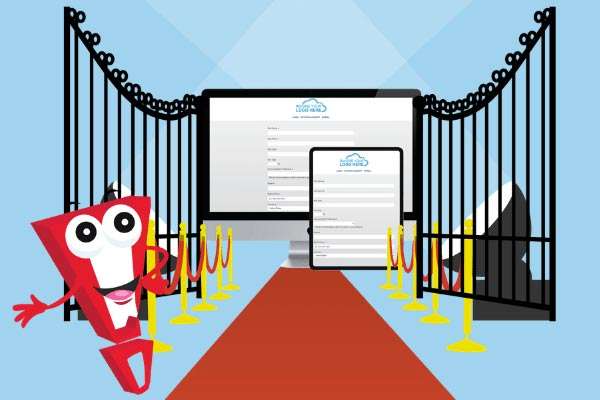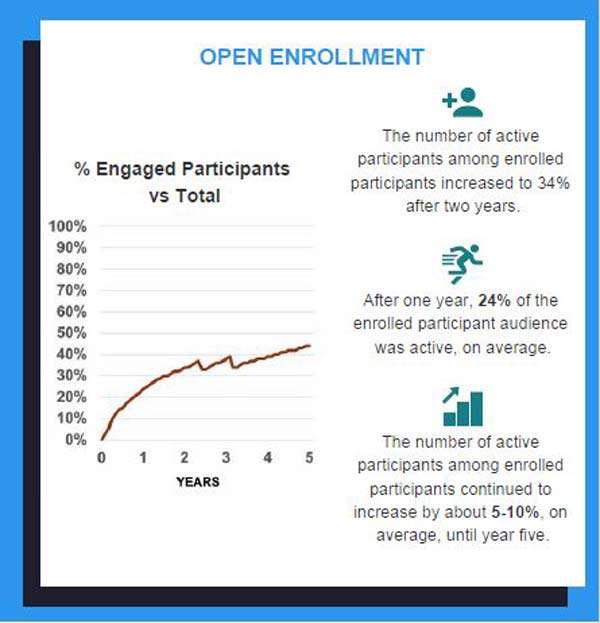When it comes to customer loyalty program best practices, establishing an enrollment strategy is just one of many key steps to a solid program structure.
Whether you’re planning to run a reward program internally, or are exploring various loyalty program providers, it’s important to identify your specific program goals. Are you looking to increase year-over-year sales volume by a certain percentage? Is your goal to identify end-users of your product to increase brand engagement and encourage repeat purchasing? And once your loyalty program is officially running, how do you know if it’s on track to be successful?
While there are plenty of statistics proving customer loyalty programs work, there is far less statistical information that shows how. Today we’ll take a look at the first major loyalty program benchmark as it pertains to a successful customer loyalty program and what your business can do to stay on track toward achieving its program goals.
Enrollment Options: Open Enrollment v. Closed Enrollment
No two customer loyalty programs are exactly alike- and rightly so. The structure of your program will be unique to your brand, your target marketing demographic, and your specific sales and marketing goals.
Program enrollment is a key determining factor in measuring the initial success of your loyalty program. Effective enrollment strategy is your program’s lifeblood as the higher the enrollment, the higher likelihood for participation, and overall marketing reach.
Strategic loyalty marketing points to two different types of enrollment plan options when structuring your program.
Open Enrollment
An open-enrollment strategy is one in which any customer can enroll. This type of enrollment suits programs where sellers are unknown to channel stakeholders. It provides businesses with the opportunity to start building familiarity and investment with channel partners with whom they do not yet have a point of contact. This type of enrollment is farther reaching in terms of a customer base, providing a more complete customer data picture and provides better insight into your channel.
With the help of loyalty program software, customer data organization is easy with an open enrollment model. An online platform for easy enrollment access combined with CRM integration makes program participation a breeze. Loyalty program examples that benefit greatly from this enrollment structure include:
- Dealer incentive programs targeting dealers, distributors, or contractors
- VAR or value-added reseller loyalty programs
- Rebate or Spiff programs for motivating sales reps
Closed Enrollment
A closed enrollment strategy capitalizes on the factor of exclusivity, allowing only invited participants to join. Usually, participants receive an email invitation that provides the program URL and instructions on creating an online account.
Closed enrollment programs are typically aimed at an audience that has a higher degree of familiarity and investment in your brand.
Start Building A Successful Customer Loyalty Program Today!
Standards for Enrollment in a Customer Loyalty Program
To paint a better picture of our loyalty program strategy for our clients, Incentive Solutions conducted internal research on 35 of its most successful customer loyalty programs. With over 25+ years in reward program experience, this experiment was limited to programs
- created in or after 2010; and
- remained active for 3 or more years.
While enrollment data collection can be measured simply by taking a headcount of participants, successful enrollment is defined by
- The length of time it takes for participants to enroll
- The level of customer engagement maintained once enrollment occurred.
For the purpose of this study, an active participant is defined as one who consistently logs into their program portal and participates in program activity in order to receive rewards. Let’s take a look at what was discovered.
Customer Loyalty Program Data
For loyalty programs utilizing the open enrollment module, statistics showed:
- 24% of the enrolled participant audience was active after one year;
- 34% of enrollees were active after two years; and
- The number of active participants among those enrolled continued to increase by approximately 5-10% until year five.
As detailed by the graph above, our top-performing loyalty programs displayed:
- 60% of the enrolled participant audience as active in the program after one year;
- 75% of enrollees as active after year two; and
- The average number of days for a participant to enroll is 128, or about four months.
Data Analysis: Is There an Ideal Enrollment Strategy?
As the data displays, programs with a closed enrollment process produces higher engagement results in comparison to those using open enrollment. While higher engagement typically translates to higher investment in your brand, it is important to acknowledge the role of your program’s target demographic when analyzing this data.
For a closed enrollment strategy enticing top-performing customers, those with a history of selling your product are more likely to both enroll and remain active in order to earn more rewards. With open enrollment, the initial goal is to cast a wide net, meaning smaller, part-time customers will also be counted amongst top earners, causing participation to be unsurprisingly lower.
While there are proven techniques for structuring a loyalty program, a great program provider will leave room for flexibility. A program with a goal of identifying its end users with open enrollment can choose to pivot their enrollment technique or expand their program entirely once a loyal customer base is established.
Interested in More Customer Loyalty Strategy?
Building a successful customer loyalty program, while far from simple, can be made easier with proper guidance, strategy, technology and data. There are very few ways to boost sales, increase customer engagement, build brand awareness, and stand out from the competition like a successful customer loyalty program can. A properly run program will provide the ideal return on investment your business needs right from the start.
Keep an eye out in the coming weeks for more in-depth customer loyalty program data, and in the meantime, check out some of our top loyalty program content:
- Channel Data Manufacturers and Distributors Need for a Successful Loyalty Program
- The Free Guide Every Incentive Program Needs
- The BThruB Incentive Program Playbook: Free Download!






